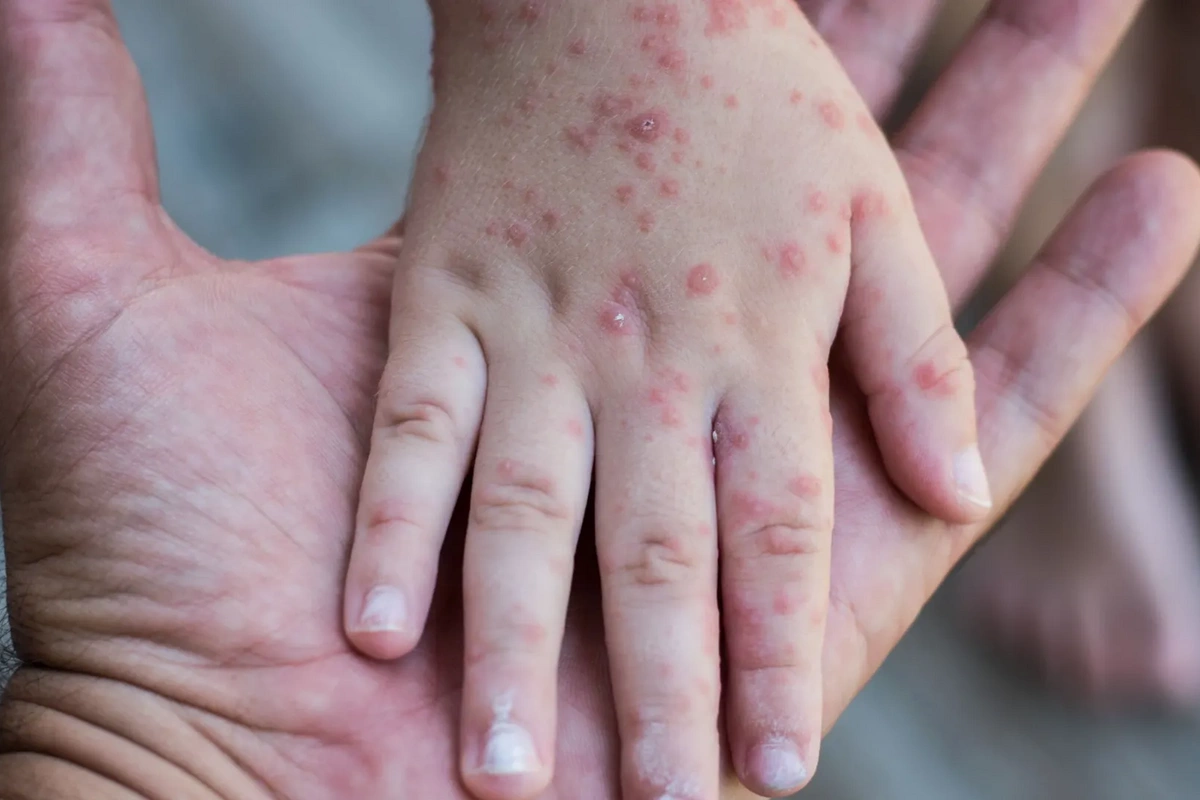Coxsackie Virus: Why Infections Are Increasing Worldwide

Coxsackievirus belongs to the large family of enteroviruses and has been known to humans for a long time. This name refers to a group of related single-stranded RNA viruses that can cause very different clinical presentations - from mild respiratory illness or rash to severe damage to the central nervous system and heart. Viruses of this group circulate everywhere and annually infect millions of people worldwide, with children most often exhibiting the classic mucocutaneous syndromes.
The origin and classification explain why clinical manifestations vary so much. Coxsackieviruses belong to the picornavirus family and are divided into groups A and B with multiple serotypes. Some serotypes frequently cause "hand, foot, and mouth disease," while others are more commonly associated with inflammation of the heart muscle or brain membranes. These viruses are fragile outside the body but easily transmitted from person to person through direct contact, saliva droplets, nasal secretions, vesicle contents, and the fecal-oral route when hygiene is insufficient. The incubation period is usually short, with symptoms appearing several days after contact.
Clinical signs depend heavily on the serotype and the patient's age, but there are characteristic "recognizable" forms of infection. Children typically experience fever, poor appetite, irritability, and the appearance of painful ulcers in the mouth, as well as small blisters or papules on the palms and soles. Adults may have similar manifestations, but the disease often presents in a milder form or completely asymptomatic. In rare cases, the infection is complicated by viral meningitis with headache and stiffness of the neck muscles, or myocarditis, when shortness of breath, weakness, and rhythm disturbances develop, and emergency care may be required. If you experience severe weakness, difficult breathing, prolonged high fever, or signs of dehydration, seek medical attention immediately.
Why people are talking about the "increase" in cases and where outbreaks are most commonly registered. Enterovirus infections, including those caused by Coxsackieviruses, have seasonal waves and geographical features. In temperate regions, incidence usually increases in summer and fall, while in the tropics, infections can circulate year-round. After the period of pandemic restrictions and reduced social activity, a segment of people with less immunological experience has accumulated in the population, which in some countries has led to a noticeable rise in cases, especially among young children attending kindergartens and schools. Regional health authorities have recorded increased incidence in different parts of the world, including certain states in the United States and countries in Africa, where local outbreaks are currently observed in educational institutions and children's collectives.
Countries and regions with the greatest burden now cannot be listed definitively because the situation changes from season to season and from year to year. In Asia, large waves of "hand, foot, and mouth" are traditionally recorded; in Southeast Asia, particularly virulent strains sometimes appear, causing more severe diseases in children. In Europe and North America, outbreaks occur less frequently, but significant local increases in incidence in children's collectives have been recorded in recent seasons. In Latin America and some African countries, hotspots have also been noted, with the increase in cases more often associated with seasonal factors, weakened preventive measures, and high contact density among children. Current regional warnings and epidemiological summaries are published by countries and regional health offices, showing that outbreaks are occurring simultaneously in several parts of the world.
How to protect your child and prevent spread. Since there is no specific antiviral therapy or widely available vaccine against all serotypes, prevention relies on simple measures. Regular handwashing, especially after using the toilet and before eating, careful handling of patient secretions, disinfection of toys and surfaces in children's groups, isolation of sick children until rashes disappear and their condition improves - all these reduce transmission. During an outbreak, kindergartens and schools strengthen sanitary measures and inform parents about signs of the disease. For severe clinical courses, treatment is symptomatic; if meningitis or heart damage is suspected, the patient requires hospitalization and specialized care.
Conclusion with practical advice. Coxsackievirus remains a common but potentially dangerous pathogen that circulates everywhere and occasionally causes local or regional outbreaks. Parents and caregivers should know the typical signs and not ignore symptoms in young children. Simple preventive measures help stop the spread. For the most up-to-date information on the epidemic situation in a specific country, it's wise to follow the official websites of health minist
Similar News
Doctor named the non-obvious cause of headache
Frequent headaches may be associated with a deficiency of riboflavin (vitamin B2) or magnesium - this mineral regulates vascular tone, and its deficiency can pr...




 Azərbaycanca
Azərbaycanca  По-русски
По-русски  English
English 





